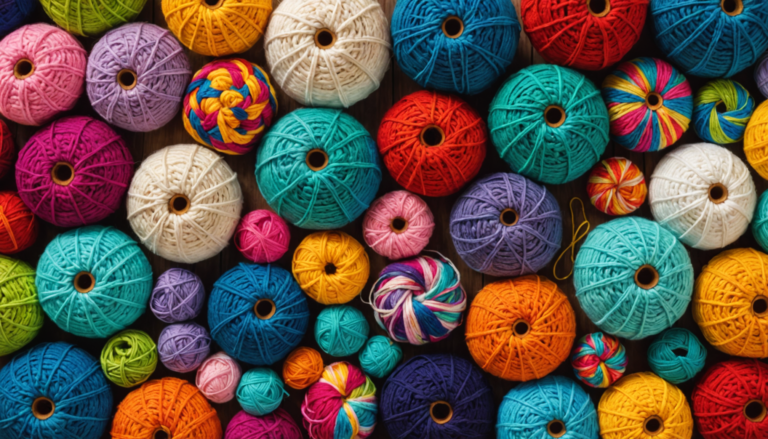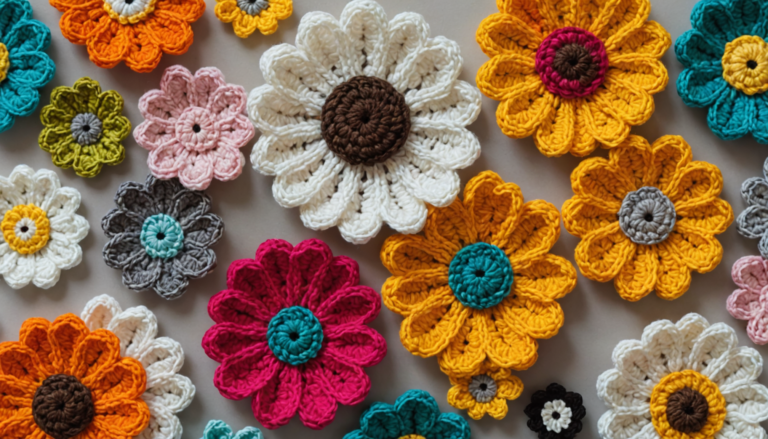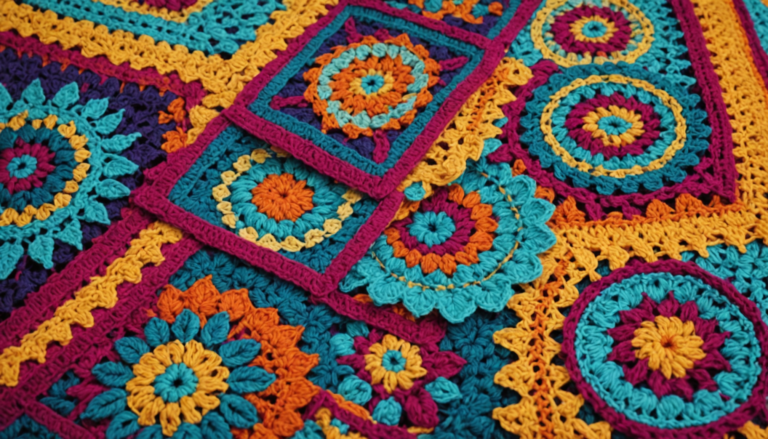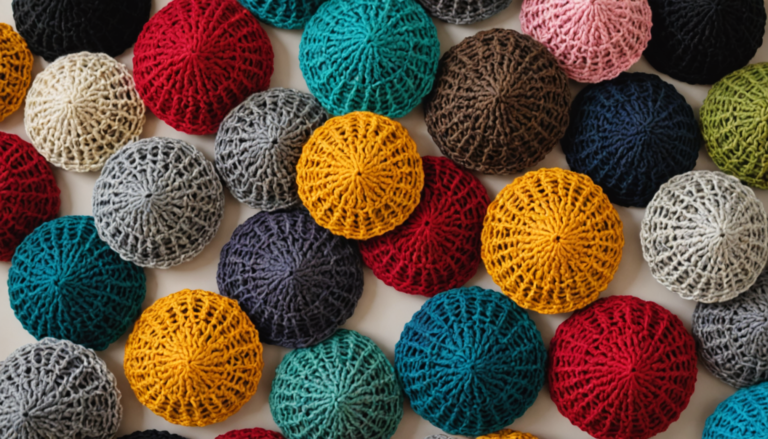Are you eager to learn the art of crochet or looking to enhance your skills? Finding crochet classes near you is easier than you might think. This guide will help you discover and join a local crochet community, whether you’re a complete beginner or an intermediate crocheter looking for new challenges.
Introduction to Crochet Classes: Unleash Your Inner Crafter
Learning to crochet offers a wealth of benefits beyond simply creating beautiful items. It’s a fantastic creative outlet, a relaxing hobby, and a wonderful way to connect with a supportive community. Crochet also improves fine motor skills, focus, and problem-solving abilities. Whether you dream of making cozy blankets, intricate lace, or adorable amigurumi, there’s a crochet class out there for you. Classes cater to all skill levels, from absolute beginners learning the basic stitches to intermediate crocheters exploring more complex patterns and techniques. The social aspect is a significant draw for many; local classes provide opportunities to meet like-minded individuals, share tips, and learn from experienced crocheters.
Finding Crochet Classes Near You: A Step-by-Step Guide
Finding the perfect crochet class starts with a strategic search. Here’s how to locate classes in your area:
Harness the Power of Online Search Engines:
- Google Maps: This is your best friend. Search for “”crochet classes near me,”” “”crochet lessons near me,”” or even more specific terms like “”beginner crochet classes [your city/town].”” Google Maps will display results with locations, hours, and often reviews.
- Social Media: Facebook groups dedicated to local crafters or crochet enthusiasts are goldmines of information. Search for groups in your area and ask about recommended classes. Instagram is another valuable resource; search relevant hashtags like #crochetclasses[yourcity] or #crochetworkshop[yourcity] to find local instructors and studios.
- Yelp and Other Review Sites: Check Yelp, TripAdvisor, and other review platforms. People often leave reviews about their experiences with local crochet classes, providing valuable insights.
Explore Local Resources:
- Community Centers and Recreation Departments: Many community centers and recreation departments offer a wide range of classes, including crochet. Check their websites or call them directly to inquire about upcoming sessions.
- Local Yarn Stores: Yarn stores are natural hubs for crocheters. They often host workshops or classes themselves, or can point you towards instructors in the area. Visiting a local yarn store is a great way to discover local resources and potentially find discounted materials.
- Craft Stores (e.g., Michaels, Hobby Lobby): While not always focused solely on crochet, larger craft stores sometimes offer introductory classes or workshops. Check their websites or in-store flyers.
Understanding Crochet Class Structure and Fees: What to Expect
The structure and cost of crochet classes vary greatly depending on the instructor, location, and class level.
Typical Class Format:
- Beginner Classes: These usually cover the fundamental stitches (chain, single crochet, double crochet), basic techniques, and simple projects. They often run for 6-10 weeks, meeting once or twice a week for 1-2 hours per session.
- Intermediate Classes: Intermediate classes build upon the basics, introducing more advanced stitches, patterns, and project types. They may focus on specific techniques like colorwork, amigurumi, or lace. The duration and frequency are similar to beginner classes.
- Workshops: Workshops are typically shorter, more focused events that teach a specific skill or project, such as making a specific type of hat or blanket. They may be a single session or a series of shorter sessions.
Cost Considerations:
The cost of a crochet class can range significantly from $20 per session to upwards of $150 for a full course. Factors influencing cost include the instructor’s experience, the length of the course, the materials included (some classes include materials, others don’t), and the location. Many instructors offer package deals for multiple sessions, providing a potential cost savings. Inquire about potential discounts for seniors, veterans, or students. Some local yarn stores may offer a “”drop-in”” or pay-per-session model, allowing for greater flexibility.
Essential Materials for Your Crochet Journey: Getting Started
To participate in a crochet class, you’ll need a few basic supplies. While some classes provide materials, it’s always best to check beforehand to avoid unexpected costs.
- Yarn: The type of yarn you choose will depend on the project and your instructor’s recommendations. Worsted weight (#4) yarn is a popular choice for beginners due to its easy-to-handle size. Choose a light, solid color for your first projects to make it easier to see your stitches.
- Crochet Hooks: The size of your hook will depend on the yarn weight. Your instructor will likely provide recommendations. Choose hooks that are comfortable to hold and that fit your hand size.
- Scissors: A small, sharp pair of scissors is essential for cutting yarn.
- Yarn Needle: A blunt-tipped yarn needle is used for weaving in loose ends.
- Stitch Markers (optional): Stitch markers are small rings or clips that help you keep track of your place in a pattern, particularly helpful for more complex projects.
- Measuring Tape (optional): Helpful for gauging your work and ensuring accurate sizing.
Choosing the Right Yarn and Hook Size: A Beginner’s Guide
Selecting the appropriate yarn and hook size is crucial for successful crocheting. Using an incorrect size can lead to loose or tight stitches, affecting the overall look and feel of your project. Beginners often find worsted weight yarn (#4) and a size H/8 (5.0 mm) or I/9 (5.5 mm) hook easy to manage. Always refer to your pattern for specific yarn and hook size recommendations.
The Advantages of Local Crochet Classes: More Than Just Stitches
Attending local crochet classes offers numerous benefits beyond learning new skills:
- Personalized Feedback: Instructors provide personalized guidance and feedback, helping you correct mistakes and improve your technique more quickly than self-teaching.
- Community Building: Local classes foster a sense of community, allowing you to connect with other crocheters, share ideas, and build lasting friendships.
- Access to Local Resources: Many instructors have connections with local yarn stores and suppliers, potentially offering discounts or access to unique materials.
- Motivation and Accountability: The structured environment of a class can provide motivation and accountability, helping you stay on track with your crochet goals.
Addressing Common Challenges: Overcoming Hurdles
Finding the right class and gathering the necessary materials can present some challenges.
Difficulty Finding Classes:
- Expand your search radius: If you’re struggling to find classes in your immediate area, consider expanding your search to nearby towns or cities.
- Be flexible with scheduling: Classes may be offered at different times of day or week. Consider your availability and look for classes that fit your schedule.
- Consider online classes: If local classes aren’t readily available, explore online crochet courses. While you miss the in-person interaction, online classes offer flexibility and convenience.
Cost Concerns:
- Look for introductory offers: Many instructors offer discounted rates for their first introductory class or workshop.
- Share the cost: If you have a friend or family member who’s also interested in learning to crochet, consider taking a class together to split the costs.
- Check for financial aid or scholarships: Some community centers or organizations may offer financial aid or scholarships for craft classes.
Materials Confusion:
- Start with a kit: Some classes include a materials kit, simplifying the process of gathering everything you need.
- Ask your instructor for recommendations: Your instructor can provide specific recommendations for yarn and hook sizes based on the class project.
- Visit a local yarn store: Yarn store staff are knowledgeable about different yarn types and can help you choose the right materials for your project.
Conclusion: Embrace the Joy of Crochet!
Learning to crochet is a rewarding experience, offering a creative outlet, a chance to connect with others, and the satisfaction of creating beautiful handmade items. By using the tips and strategies outlined in this guide, finding the perfect crochet class near you becomes a straightforward process. So, pick up your hook, gather your yarn, and embark on your crochet journey today!
Frequently Asked Questions (FAQs)
- Q: Do I need any prior experience to take a beginner crochet class? A: No, absolutely not! Beginner classes are designed for individuals with no prior crochet experience.
- Q: What if I miss a class? A: Check with your instructor about their policy on missed classes. Some instructors may offer make-up sessions or provide recorded materials.
- Q: Can I bring my own materials to class? A: Always check with your instructor beforehand. Some classes require you to use specific materials provided by the instructor, while others allow you to bring your own.
- Q: How do I choose the right class for my skill level? A: Carefully review the class descriptions to determine the skill level required. Don’t hesitate to contact the instructor if you have any questions.
- Q: What if I’m not comfortable in a group setting? A: Some instructors offer private lessons or small group sessions for those who prefer a more personalized learning experience. Consider searching for “”private crochet lessons near me””





